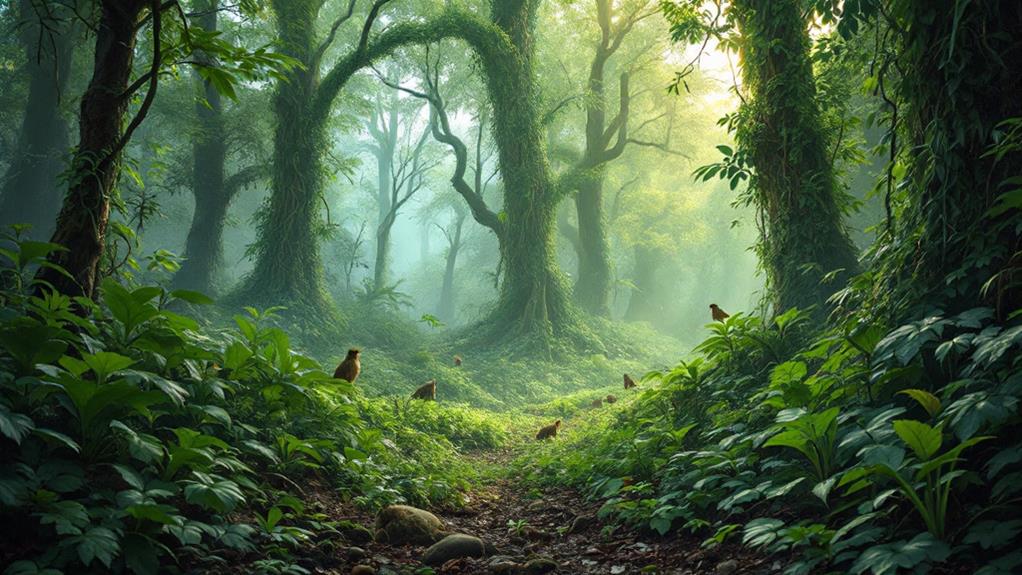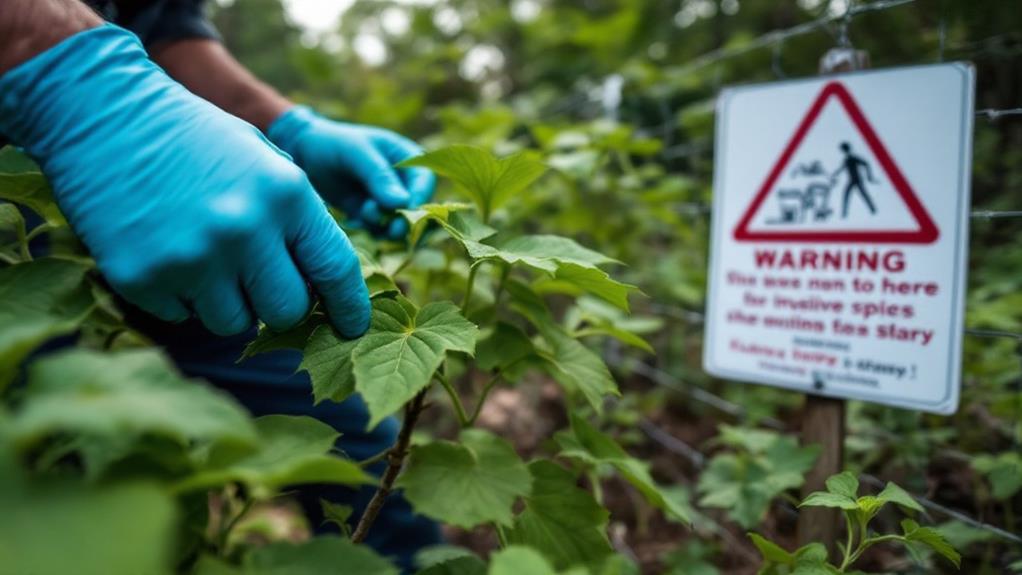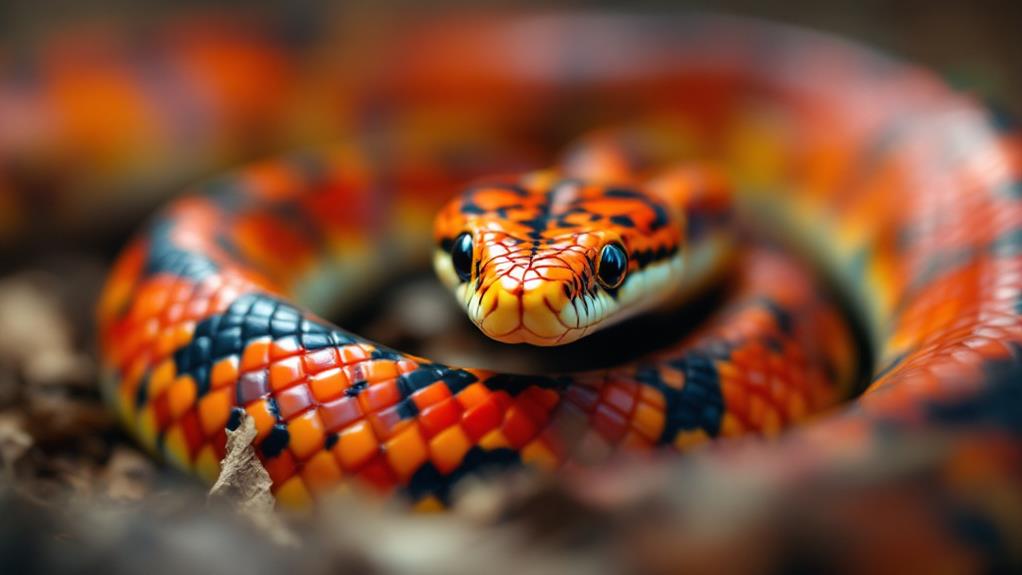What Are Invasive Species and Are They a Threat to Biodiversity?

Invasive species are non-native organisms introduced to an ecosystem where they thrive and outcompete native species. They're typically plants, animals, fungi, or microorganisms that lack natural predators in their new environment, allowing them to spread rapidly. These invaders pose a significant threat to biodiversity by displacing native species, altering ecosystems, and disrupting food webs. They can cause extensive ecological damage, economic losses, and even impact human health. You'll find invasive species in various habitats worldwide, from forests to oceans. Understanding their impacts and implementing effective control measures is essential for preserving our planet's natural balance and biodiversity.
Defining Invasive Species
Confusion often surrounds the term "invasive species." At its core, an invasive species is a non-native organism that causes harm to the environment, economy, or human health in its new habitat. These species are typically introduced to an ecosystem through human activities, whether intentionally or accidentally.
To understand invasive species, you'll need to grasp the concept of invasiveness. This refers to an organism's ability to spread rapidly and outcompete native species. The biological characteristics of invasiveness include fast growth rates, high reproductive output, and adaptability to various environments.
Not all non-native species become invasive. Many exotic plants and animals coexist peacefully with native species. However, those that do become invasive can wreak havoc on ecosystems. They may prey on native species, compete for resources, or alter habitats in ways that make them unsuitable for local flora and fauna.
It's essential to distinguish between invasive and merely non-native species. While non-native species are simply those living outside their natural range, invasive species actively disrupt their new environments. This distinction is fundamental for effective conservation and management strategies.
Impact on Native Ecosystems
Invasive species can devastate native ecosystems, often causing ripple effects throughout the entire food web. When these non-native organisms establish themselves in a new environment, they can outcompete native species for resources like food, water, and shelter. This competition often leads to habitat destruction and ecosystem disruption, as the invasive species may lack natural predators or other controls that would typically keep their populations in check.
You'll find that invasive plants can alter soil chemistry, affect water quality, and change fire regimes. Animals introduced to new areas may prey on native species unprepared for such predators, leading to population declines or even local extinctions. Invasive species can also introduce new diseases or parasites to which native species have no immunity.
The impacts aren't limited to direct competition or predation. Invasive species can change the physical structure of habitats, alter nutrient cycles, and modify the behavior of native species. These changes can cascade through the ecosystem, affecting species that may not directly interact with the invader. Ultimately, invasive species can reduce biodiversity, simplify ecosystem structures, and diminish the resilience of native ecosystems to other environmental pressures.
Examples of Invasive Species

To illustrate the devastating effects of non-native species, let's look at some notorious examples. The kudzu vine, introduced to the United States from Japan in the late 19th century, has earned the nickname "the vine that ate the South." It rapidly covers and smothers native vegetation, leading to significant habitat loss for local flora and fauna.
Another infamous invasive species is the cane toad in Australia. Originally introduced to control beetle populations in sugarcane fields, these toxic amphibians have spread across the continent, poisoning native predators and outcompeting local species for resources.
In the Great Lakes, the zebra mussel has caused extensive ecological damage since its arrival in the 1980s. These small mollusks clog water intake pipes, disrupt food chains, and increase competition with native species for plankton.
The Burmese python in Florida's Everglades is yet another example. These large snakes have decimated local mammal and bird populations, altering the ecosystem's balance. Their presence has led to a dramatic decline in native species, showcasing the severe impact invasive predators can have on unprepared ecosystems.
Causes of Species Invasion
Understanding the root causes of species invasion is critical for preventing future ecological disruptions. While some invasions occur naturally, human activities have dramatically accelerated the process. Global trade and transportation play a significant role, as species hitchhike across borders in cargo ships, airplanes, and vehicles. Human-caused habitat disruption also creates opportunities for invasive species to gain a foothold in new environments.
Key factors contributing to species invasion include:
- Climate change altering ecosystems and expanding suitable habitats
- Intentional introduction for agriculture, horticulture, or pest control
- Accidental release of pets or ornamental plants
- Ballast water discharge from ships
- Construction of canals and other waterways connecting previously isolated ecosystems
You'll find that many invasive species thrive in disturbed environments, such as urban areas or regions affected by deforestation. These altered settings often lack the natural predators and competitors that would typically keep invasive populations in check. As global trade continues to expand and climate change intensifies, the risk of new invasions increases. By addressing these root causes, we can develop more effective strategies to prevent and manage invasive species, protecting biodiversity worldwide.
Prevention and Control Measures

Effective strategies for preventing and controlling invasive species are essential in protecting biodiversity. You can help by staying informed and taking action in your community. Early detection and rapid response are pivotal, so report any unusual plants or animals you encounter to local authorities.
To prevent the spread of invasive species, always clean your outdoor gear, boats, and vehicles before moving between different areas. When traveling, don't bring plants, animals, or organic materials across borders. If you're a pet owner, never release exotic pets into the wild.
Public awareness campaigns play a paramount role in educating people about the risks of invasive species. Support these initiatives and share information with friends and family. Participate in local eradication efforts and volunteer for habitat restoration projects to help native species thrive.
For established invasions, control measures may include physical removal, biological control agents, or targeted chemical treatments. However, these methods require careful planning and expert guidance to avoid unintended consequences. Encourage your local government to allocate resources for invasive species management and support research into innovative control techniques.
Economic and Social Consequences
The ramifications of invasive species extend far beyond ecological concerns, profoundly affecting economies and societies worldwide. You'll find that invasive species can cause substantial economic disruption, costing billions annually in damage control, lost productivity, and mitigation efforts. They can devastate agricultural crops, disrupt fisheries, and damage infrastructure, leading to job losses and reduced income for affected communities.
Social displacement is another consequence you might encounter. Invasive species can:
- Alter traditional land use practices
- Disrupt cultural activities tied to native species
- Force migration of communities dependent on affected resources
- Increase health risks through the spread of new diseases
- Strain social services and government resources
You'll notice that these impacts aren't evenly distributed, often disproportionately affecting rural and indigenous communities. The need to combat invasive species can also create conflicts between different stakeholder groups, each with their own priorities and viewpoints. As you grapple with these challenges, it's essential to consider both the immediate and long-term effects of invasive species on your local economy and social fabric, ensuring that response strategies address not just ecological concerns, but also the complex web of human impacts.



